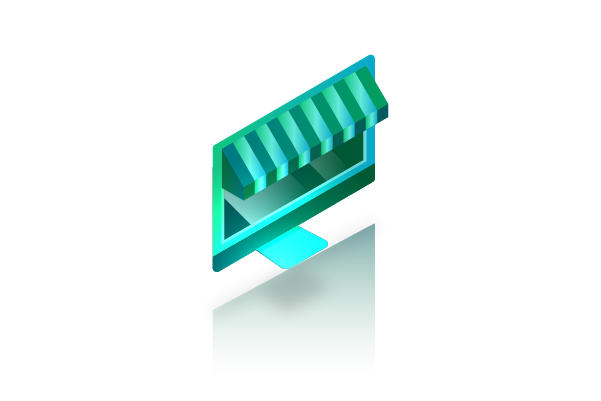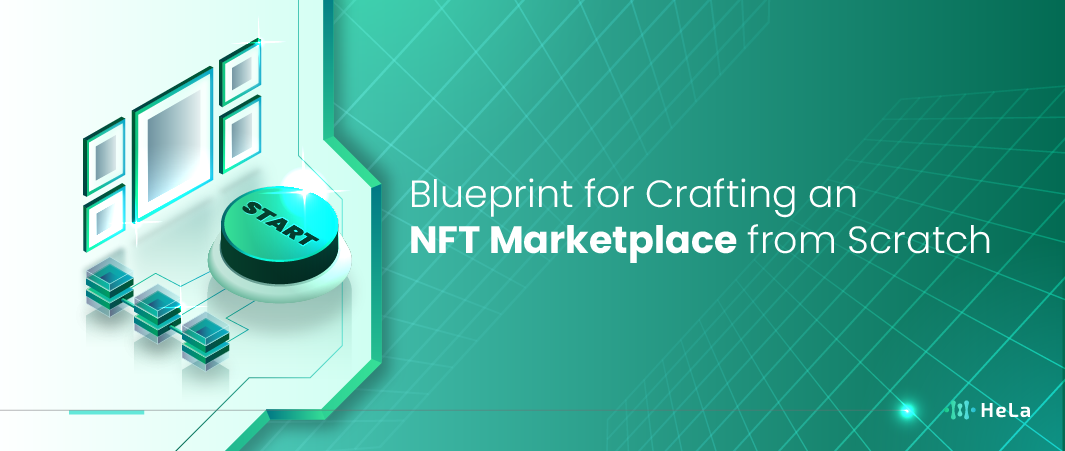As NFTs continue to revolutionize the digital space, the demand for well-built marketplaces has skyrocketed, offering a prime opportunity for developers, entrepreneurs, and creators to tap into this booming industry. From designing an intuitive user interface to handling backend functionality and integrating cryptocurrency wallets, every step of the process is crucial to delivering a seamless and secure experience for your users. Whether you’re looking to build an NFT marketplace for digital art, collectibles, or other assets, this guide will equip you with the essential knowledge to turn your vision into reality.
As you dive deeper into this comprehensive guide, you’ll explore not only the technical aspects but also marketing strategies to attract users and grow a thriving community. With insights on testing, launching, and promoting your marketplace, this resource ensures you’re well-prepared for success. If you’re serious about entering the NFT space and want to know the right steps to build and scale your platform, keep reading—this article offers everything you need to navigate the process smoothly and effectively.
What is NFT Marketplace?

An NFT marketplace is an online platform that allows users to buy, sell, and trade NFTs (Non-Fungible Tokens). NFTs are unique digital assets that represent ownership of a digital item, such as art, music, videos, or even virtual items within games. The marketplace acts as a bridge between creators and buyers of NFTs. On the platform, creators can mint (create) their NFTs and offer them to buyers, who can either place bids or make direct purchases using cryptocurrencies like Ethereum.
There are two main types of NFT marketplaces: open marketplaces and curated marketplaces. Open marketplaces allow anyone to create and sell NFTs without any curation process, while curated marketplaces only allow verified or invited creators to sell their works. An example of an open marketplace is OpenSea, while platforms like SuperRare are more curated. This distinction offers flexibility to creators in choosing a platform that suits their target audience, while buyers can select marketplaces based on the level of authenticity and exclusivity of the works they seek.
Also Read: 10 Best White Label NFT Marketplaces in 2024
Transactions on NFT marketplaces are conducted using blockchain technology, ensuring that each transaction is recorded permanently and cannot be altered. This provides users with security and transparency, as NFT ownership can be easily verified. Additionally, some marketplaces offer royalties to creators whenever their NFTs are resold, providing long-term incentives for content creators to continue producing work and earning income from their creations in the future.
In recent developments, NFT marketplaces have expanded beyond just the buying and selling of digital artwork. They are now entering other sectors like music, fashion, and virtual real estate. These platforms are also innovating with new features such as staking, auctions, and fractional ownership, where owners can hold a fraction of a valuable asset. This makes NFT marketplaces a hub of new digital economic activity that is growing in popularity across the globe.
How to Build an NFT Marketplace from Scratch?

Building an NFT marketplace from scratch is a complex process that involves careful planning, a deep understanding of blockchain technology, and the ability to integrate several technical components. To ensure success, you need to address both the technical and business aspects of the project. Here’s a more detailed guide to help you build an NFT marketplace from scratch:
Selecting the Right Blockchain
The first crucial step in building an NFT marketplace is choosing the blockchain platform you’ll use. This decision will influence the entire marketplace’s operation, including security, scalability, transaction speed, and costs. Ethereum is the most popular choice because of its robust ecosystem, large developer community, and widespread adoption of its ERC-721 and ERC-1155 token standards, which are specifically designed for NFTs.
However, Ethereum’s gas fees can be high during periods of network congestion. Alternatives like Binance Smart Chain (BSC), Flow, or Solana offer lower fees and faster transactions, making them attractive for developers who prioritize cost-efficiency and performance. You may also want to consider building a cross-chain marketplace, allowing users to mint and trade NFTs on multiple blockchains. This adds complexity but can attract a broader user base.
Developing Smart Contracts
Smart contracts are essential for the automation and decentralization of your NFT marketplace. They are programmed to handle core marketplace functionalities, such as the minting of NFTs (creating new tokens), executing sales, managing auctions, and distributing royalties to creators upon resale. These contracts run on the blockchain and are tamper-proof, meaning once deployed, they cannot be easily altered.
To build smart contracts, you’ll need to use a programming language suited for the blockchain of your choice. For Ethereum, this would be Solidity, while Rust is commonly used for Solana. Smart contracts must be thoroughly tested and audited for security, as flaws or bugs can lead to vulnerabilities, risking the loss of user funds or even the collapse of the marketplace. Partnering with a professional smart contract auditor is highly recommended to prevent such issues.
Building the User Interface and Backend
The user interface (UI) of your NFT marketplace is crucial for a smooth user experience, allowing easy navigation, browsing, and transactions. Use frameworks like React.js, Vue.js, or Angular.js to create an intuitive and visually appealing frontend where users can manage profiles, upload assets, and engage in transactions.
On the backend, manage user authentication, data storage, and off-chain data with tools like Web3.js or Ethers.js for blockchain integration. Since large files can’t be stored on the blockchain, use decentralized storage solutions like IPFS or Arweave to keep data secure and scalable. Consider cloud platforms like AWS to handle increasing user and transaction volumes.
Integrating Cryptocurrency Wallets and Payment Gateways
Integrating cryptocurrency wallets is essential for an NFT marketplace, allowing users to connect their accounts and manage transactions through wallets like MetaMask, WalletConnect, and Coinbase Wallet. Supporting multiple wallets and payment methods, including Ethereum, BNB, and USDT, enhances convenience and global accessibility.
Additionally, features like gas fee estimation and lazy minting simplify the user experience. Gas fee estimation helps users understand transaction costs, while lazy minting lets creators avoid upfront fees, making it easier for new entrants to start without initial investment.
Testing, Launching, and Growing the Marketplace
Before launching, conduct thorough testing of your NFT marketplace, starting with unit tests for smart contracts, frontend, and backend, followed by integration tests to ensure the system works as a whole. Deploy on a testnet, like Rinkeby for Ethereum, to simulate real-world conditions and identify issues before the official launch.
Once testing is complete, proceed with the mainnet launch and focus on a robust marketing strategy. Partner with prominent NFT artists, run influencer campaigns, and host exclusive events to attract users. Build and engage with your community through platforms like Discord, Telegram, and Twitter to foster excitement and support.
Key Features of an NFT Marketplace

Key features of an NFT marketplace are the foundation that makes it functional, secure, and user-friendly for creators, collectors, and traders. These features ensure a seamless and engaging experience for both newcomers and seasoned users of blockchain technology. An NFT marketplace must integrate these critical elements to facilitate the minting, buying, selling, and trading of NFTs while prioritizing user satisfaction, trust, and security. Here are Some Key Features of an NFT Marketplace:
User-Friendly Interface
A well-designed user interface (UI) is essential for any successful NFT marketplace. The platform should be intuitive, allowing users to easily browse, buy, and sell NFTs without being overwhelmed by complicated processes.
Features such as clear categories, easy-to-navigate menus, and organized listings should help users find NFTs based on their preferences. The UI should cater to users of all experience levels, ensuring that even those new to NFTs can easily create accounts, mint tokens, and complete transactions without confusion.
Decentralized Wallet Integration
A critical feature of an NFT marketplace is its integration with decentralized wallets like MetaMask, WalletConnect, or Coinbase Wallet. Wallet integration allows users to connect their wallets to the platform securely, enabling them to manage their crypto funds, mint NFTs, and execute transactions seamlessly.
Supporting multiple wallet types increases convenience and attracts a broader user base. Additionally, the marketplace should ensure that wallet connection processes are secure and smooth to prevent any issues during transactions.
Minting and Tokenization
The ability to mint and tokenize digital assets is at the core of an NFT marketplace. This process involves creating new NFTs by converting digital content (such as art, music, or collectibles) into blockchain-based tokens.
The marketplace should support popular NFT standards, such as ERC-721 or ERC-1155 on Ethereum, or equivalent standards on other blockchains like Binance Smart Chain or Flow. The platform should also offer an easy-to-use minting process that allows creators to upload their digital files, set parameters for their tokens, and issue them with minimal technical knowledge.
Smart Contracts
Smart contracts are the backbone of NFT marketplaces, handling all automated processes like minting, transferring ownership, royalty payments, and auctions. These self-executing contracts run on the blockchain, ensuring transparency and trust in every transaction.
NFT marketplaces must ensure that smart contracts are well-audited, as flaws or vulnerabilities could compromise the security of the platform. Smart contracts also manage revenue-sharing features, automating the payout of royalties to creators every time their NFT is resold, providing artists with long-term income streams.
Search and Filtering Options
Search and filtering tools are crucial for enhancing user experience, especially when dealing with a large volume of NFTs. Users should be able to search NFTs by categories like price, popularity, creator, or rarity, making it easier to find specific types of NFTs they are interested in.
Advanced filtering options allow users to refine their search, while a recommendation engine can offer personalized suggestions based on previous activities or interests, encouraging further exploration and purchases.
Auction and Bidding System
A well-implemented auction and bidding system is a powerful feature that enhances the buying and selling process in NFT marketplaces. Sellers can list their NFTs for auction, allowing potential buyers to place bids and compete for ownership.
This not only adds excitement to the transaction process but can also increase the final sale price for high-demand items. Additionally, marketplaces should include a “buy now” feature for users who prefer to make instant purchases without participating in auctions, catering to different types of buyers.
Royalties and Revenue Sharing
Royalties are one of the most attractive features for creators using NFT marketplaces. Artists, musicians, and other creators can program their NFTs to pay them a percentage of the sale price every time the NFT is resold.
This automated royalty system, handled by smart contracts, ensures that creators continue to earn revenue long after the initial sale, making the platform more appealing for artists looking to monetize their work over time. The marketplace should also offer flexible royalty settings, allowing creators to set their desired percentage for future resales.
Security and Verification
Security is paramount in an NFT marketplace, given the value of the digital assets being traded. Features like two-factor authentication (2FA), encrypted data storage, and regular security audits help protect users and their assets.
Also Read: 10 Best Tron NFT Marketplace Platforms to Check this 2024
Additionally, the platform should implement a verification system for creators, ensuring that only legitimate artists and projects are listed. This builds trust among buyers, reducing the risk of counterfeit NFTs and fraudulent activity, while also enhancing the marketplace’s reputation.
Cross-Chain Compatibility
As NFTs expand across multiple blockchains, cross-chain compatibility has become an increasingly important feature for NFT marketplaces. Enabling users to mint, buy, and sell NFTs across different blockchain networks, such as Ethereum, Binance Smart Chain, and Solana, enhances flexibility and reduces limitations.
This feature allows users to leverage the benefits of different blockchains, such as lower transaction fees or faster processing times, thereby broadening the marketplace’s user base and attracting more diverse participants.
Community Features and Social Integration
An engaging community is critical for the success of an NFT marketplace. Social features such as creator profiles, user comments, likes, and the ability to follow artists or projects foster interaction and engagement.
This not only helps build a sense of community but also increases visibility for creators and their NFTs. Integration with social media platforms such as Twitter, Instagram, or Discord allows users to share NFTs and marketplace listings, helping to drive traffic and encourage wider adoption.
Should You DIY Your Own NFT Marketplace?
Deciding whether to DIY (do it yourself) your own NFT marketplace depends on several factors, including your technical expertise, resources, and long-term goals. Building an NFT marketplace from scratch can offer great flexibility and ownership, but it also comes with significant challenges. Below are key considerations to help you decide if you should embark on creating your own NFT marketplace:
Technical Skills and Resources
Building an NFT marketplace requires a combination of technical skills in blockchain development, smart contracts, and web development. You’ll need proficiency in programming languages like Solidity for smart contracts, and JavaScript or Python for the platform’s frontend and backend.
If you or your team lacks these skills, the project can quickly become overwhelming, requiring you to hire experienced developers. Additionally, handling security issues, smart contract audits, and server management requires expertise, as mistakes can lead to vulnerabilities that compromise the platform.
Cost Considerations
Developing an NFT marketplace from scratch is not only time-consuming but can also be costly. Hiring blockchain developers, purchasing server space, conducting security audits, and integrating decentralized features can require a substantial investment.
However, DIY offers the advantage of eliminating third-party commissions and transaction fees, giving you full control over revenue streams in the long run. It’s essential to weigh the initial costs of development against potential future earnings to determine if a custom-built marketplace is financially viable.
Customization and Control
One of the primary benefits of building your own NFT marketplace is the level of control and customization it offers. Unlike using pre-built solutions, a custom marketplace allows you to design the platform exactly as you envision it.
You can tailor features to suit your specific audience, integrate unique tools (like custom royalty settings or auction systems), and build a brand identity. This flexibility can set your marketplace apart in a crowded space. However, this also means taking on the responsibility of ongoing updates, scaling, and technical support.
Maintenance and Growth
Once you’ve built and launched your NFT marketplace, the work doesn’t stop there. Ongoing maintenance is required to ensure the platform remains secure, efficient, and up to date with industry trends.
Additionally, growing the marketplace will require a robust marketing strategy, community-building efforts, and user acquisition initiatives. Managing updates and responding to user feedback can be resource-intensive, especially if your marketplace experiences rapid growth. If you’re prepared to commit to long-term maintenance and scaling, a DIY approach might be worthwhile, but it can also be a burden if resources are limited.
Conclusion
How to Build an NFT Marketplace: A Beginner’s Guide has provided you with a clear roadmap for creating, launching, and promoting your own NFT platform. From the initial stages of designing a user-friendly interface and building a strong backend to integrating wallets and ensuring scalability, each step is vital to creating a seamless experience for your users. Additionally, by implementing key features like decentralized storage and gas fee estimation, your marketplace can stand out in a competitive space while offering a user-friendly environment.
With the technical foundation covered, the importance of marketing, community-building, and testing cannot be overstated. By following these strategies and continuously optimizing your platform, you’ll be well-positioned to grow your marketplace and attract a global audience. Whether you are a developer, entrepreneur, or creator, this guide equips you with the tools needed to succeed in the rapidly expanding NFT ecosystem.
Disclaimer: The information provided by HeLa Labs in this article is intended for general informational purposes and does not reflect the company’s opinion. It is not intended as investment advice or a recommendation. Readers are strongly advised to conduct their own thorough research and consult with a qualified financial advisor before making any financial decisions.

